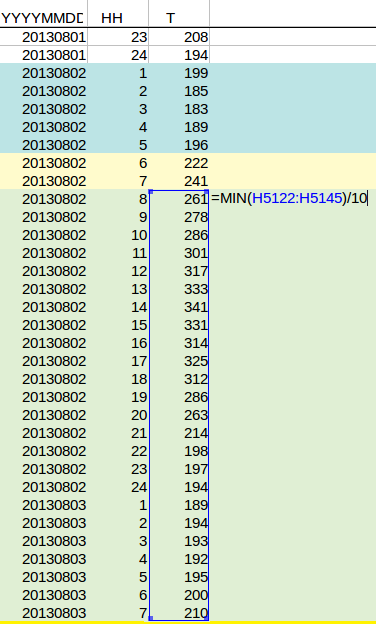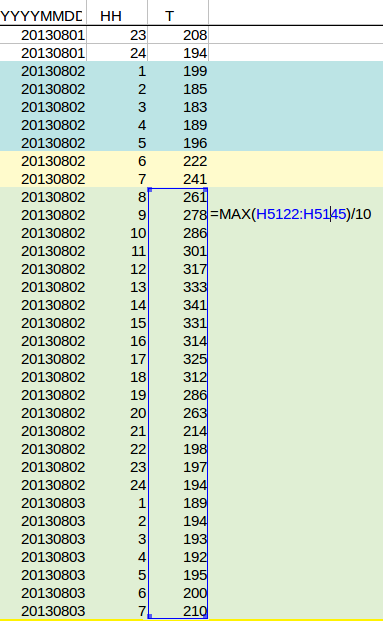How to calculate the daily min and max temperature: Difference between revisions
Jump to navigation
Jump to search
No edit summary |
No edit summary |
||
| Line 2: | Line 2: | ||
[[File:Tutorial_daily_min_temp_table_(Heat_Overlay).png]][[File:Tutorial_daily_max_temp_table_(Heat_Overlay).png]] | [[File:Tutorial_daily_min_temp_table_(Heat_Overlay).png]][[File:Tutorial_daily_max_temp_table_(Heat_Overlay).png]] | ||
{| class="wikitable" | |||
! Column | |||
! Name | |||
! Unit | |||
! Dutch Description | |||
|- | |||
|2/B | |||
|YYYYMMDD | |||
|Date | |||
|''datum (YYYY=jaar,MM=maand,DD=dag)'' | |||
|- | |||
|3/C | |||
|HH | |||
|Hour | |||
|''tijd (HH=uur, UT.12 UT=13 MET, 14 MEZT. Uurvak 05 loopt van 04.00 UT tot 5.00 UT'' | |||
|8/H | |||
|T | |||
|0.1 °C | |||
|''Temperatuur (in 0.1 graden Celsius) op 1.50 m hoogte tijdens de waarneming'' | |||
|} | |||
{{article end | {{article end | ||
Revision as of 15:29, 16 February 2023
The daily average min and max temperature has to be measured from 8 UTC current day to 7 UTC the next day, according to the DPRA Heat stress report. The temperatures are also measured in 0.1 °C, so the values from the KNMI weather data column T have to be divided by 10 to get to values in °C.
| Column | Name | Unit | Dutch Description | ||||
|---|---|---|---|---|---|---|---|
| 2/B | YYYYMMDD | Date | datum (YYYY=jaar,MM=maand,DD=dag) | ||||
| 3/C | HH | Hour | tijd (HH=uur, UT.12 UT=13 MET, 14 MEZT. Uurvak 05 loopt van 04.00 UT tot 5.00 UT | 8/H | T | 0.1 °C | Temperatuur (in 0.1 graden Celsius) op 1.50 m hoogte tijdens de waarneming |

